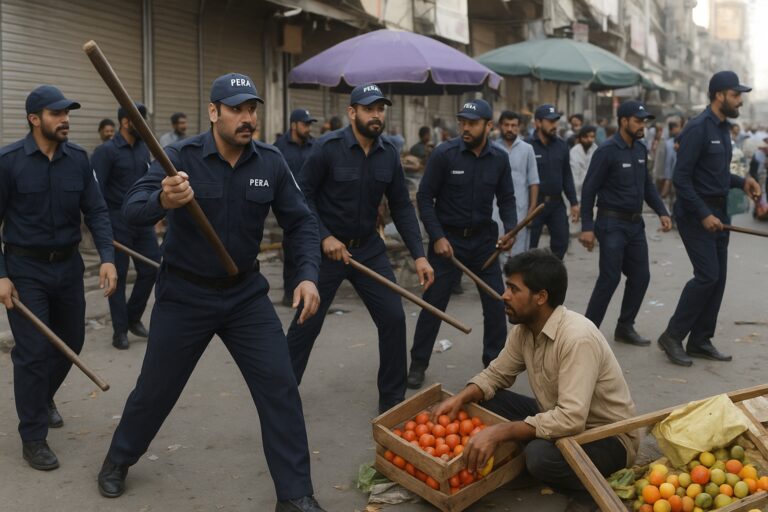Unusual Heavy Rains in Pakistan: The Impact and Response
When the Heavens Unleash
Flash Floods Like No Other
Unusual heavy rains in Pakistan 2025, and the country found itself underwater, not just symbolically but in the crushing, real sense of being submerged by some of the most intense and unusual heavy rains in its history. Torrential rains, sudden cloud bursts, and shifting weather patterns have combined to create a perfect storm of havoc. Entire cities and vast rural areas have struggled under the relentless downpour, resulting in the tragic loss of lives, widespread displacement, and destruction on a colossal scale.
Every summer in Pakistan, people look to the skies with a mix of hope and dread. Hope for rain to cool the scorching heat and nourish crops. Dread because those same rains often arrive with a vengeance, turning neighbourhoods into lakes and farms into swamps.
https://mrpo.pk/deforestation/
But beyond the immediate disaster lies a web of factors contributing to the intensity and impact of these rains. Understanding these causes, their effects, and exploring practical measures to mitigate future risks is essential for Pakistan’s resilience. This article delves deeply into the story behind the floods of 2025, the challenges posed by urban and rural vulnerabilities, and the tangible steps that can help protect lives and property in the future.
Who Faces the Greatest Risk?
Not all communities suffer equally. Some are consistently hit harder:
- Low-Income Settlements: Informal housing near drains and floodplains is the first to drown.
- Mountain Villages: Sudden cloud bursts trigger flash floods that sweep away entire hamlets.
- Children and the Elderly: Mobility challenges make a quick escape almost impossible.
- Farmers: Fields, animals, and homes are often destroyed at the same time.
The cruel irony is that those who contribute least to climate change are the ones paying the heaviest price.
1. Understanding the Causes of Unusual Heavy Rains and Flooding
Unusual heavy rains in Pakistan, and to grasp why Pakistan faced such unprecedented flooding in 2025, it’s vital to analyse the complex interplay of natural and human factors behind these heavy rains.
Climate Change’s Growing Grip
The atmosphere is warming, and with that, its capacity to hold moisture increases. This results in erratic and extreme precipitation events rather than gentle rains spread over weeks. Pakistan has seen this firsthand, where seasonal monsoons now turn into short, violent bursts pouring down unimaginable amounts of water in mere hours.
Cloud Bursts and Their Menace
Cloud bursts، sudden, intense rainfalls typically concentrated over small areas، have increased in frequency. These events overwhelm local drainage systems and trigger flash floods and landslides, especially in mountainous northern regions. Such rapid downpours leave little time for warning or evacuation.
Urbanisation and Land-use Changes
Pakistan’s rapid urban expansion has contributed heavily. Converting natural floodplains, wetlands, and forests into concrete jungles means losing natural buffers that absorb rainfall. Instead, rainwater rushes off impervious surfaces like roofs and roads at high speeds, overwhelming drainage systems and causing surface flooding.
Deforestation and Soil Degradation
In upstream and rural areas, deforestation and poor land management have reduced the soil’s ability to absorb and slow down rainfall. Without sufficient vegetation cover, water runs off faster, increasing the quantity and speed of floodwaters reaching towns and cities downstream.
2. The Effects and Risk Factors of the 2025 Floods
https://photos.google.com/photo/AF1QipM553qHYTTlKzB8tjHwoy2_grYDbUa6hDqxughX
Heavy rains are not just about water; they are about human lives, economies, and the environment.
Loss of Lives and Displacement
With overflowing rivers and sudden flash floods, communities have been caught off guard. Hundreds of lives have been lost, and many thousands are displaced, with entire villages submerged or washed away. Evacuations challenge authorities and stress humanitarian aid systems.
Property and Infrastructure Damage
Homes, schools, hospitals, and roads have taken the brunt of the floods. Many buildings in flood-prone areas were not designed to withstand such forces, collapsing under pressure. Transportation networks have been fractured, isolating communities and delaying aid delivery. Power outages and water contamination have further complicated recovery.
Economic Shocks
Agriculture, a key sector in Pakistan’s economy, has been severely impacted. Flooded fields mean ruined crops and lost income for farmers, risking food shortages. Businesses, especially small and medium enterprises, face disruption due to damaged facilities and declining customer access.
Public Health Concerns
Stagnant floodwaters foster disease outbreaks, such as dengue fever and cholera. Medical facilities struggle to cope with long-term health impacts in addition to immediate injuries caused by flooding.
Vulnerability Factors
Socioeconomic status plays a major role in flood impact. Poorer communities often live in higher-risk areas with weak infrastructure, making them disproportionately vulnerable. Limited access to early warnings and evacuation assistance worsens their plight.
3. Major Faults Amplifying Flood Damage and How to Fix Them
Looking critically at why urban and rural areas suffered so extensively uncovers systemic faults.
Blocking Natural Waterways
The rapid, unplanned construction on natural riverbeds and drainage paths has blocked critical escape routes for water. When these pathways are clogged or built over, water spills into neighbourhoods and commercial zones, deepening flood damage.
Ill-planned Urban Development
Cities have expanded into low-lying floodplains or unstable terrains without adequate controls or flood mitigation plans. This neglect exposes housing and infrastructure to repeated flood risks.

Lack of Building Codes and Enforcement
Many structures lack proper flood-resistant designs. Foundation heights, waterproofing, and structural reinforcements are often ignored due to lax regulations or cost-cutting, leading to widespread destruction when waters rise.
Outdated and Inadequate Drainage Systems
Existing drainage and stormwater systems in many cities are outdated, under-capacity, or poorly maintained, incapable of managing the sheer volume of water during heavy rains. Blocked drains due to garbage exacerbate the problem.
Corrective Measures Must-Haves
-
Protect and restore natural drainage and floodplain areas.
-
Enforce urban planning that includes rezoning high-risk areas as green space or retention zones.
-
Mandate and inspect buildings for flood safety compliance.
-
Upgrade drainage infrastructure with modern capacity and technology.
-
Improve waste management and community awareness to keep drains clear.
4. Urban Planning and Infrastructure Strategies to Combat Floods
Smart, resilient urban design is crucial in a flood-prone future.

Green Infrastructure: Nature as an Ally
Rain gardens, bioswales, permeable pavements, green roofs, and tree canopies help absorb and slow water runoff naturally. These measures not only reduce flood peaks but also beautify cities and improve air quality.
Improved Drainage Networks
Expanding pipe sizes, building retention basins, and maintaining clear channels ensure that urban water systems can handle intense storms. Using smart sensors to monitor stormwater flow and catch blockages early is a growing trend.
Rainwater Harvesting and Storage
Capturing rainwater on-site reduces the volume reaching public drains. Stored water can also be used for irrigation or to recharge groundwater.
Community Involvement and Early Warning
Educating residents on flood risks, creating evacuation plans, and using technology to alert communities promptly saves lives and property.
5. Challenges in Adopting Green Infrastructure and Flood Resilience
Despite their promise, green infrastructure projects face hurdles.
-
Technical constraints in soil, space, and climate conditions can limit implementation.
-
Scepticism from policymakers or engineers accustomed to traditional solutions slows adoption.
-
Maintenance demands and unclear responsibilities challenge long-term success.
-
Regulatory frameworks often lag, complicating permits and standards.
-
Funding uncertainties and public awareness gaps must be addressed.
Conclusion: Toward a More Resilient Pakistan
The Unusual heavy rains in Pakistan and the floods of 2025 are a harsh reminder of nature’s power and the urgent need for smarter coexistence. Pakistan faces an undeniable challenge, but with coordinated efforts in climate adaptation, urban planning, and community engagement, the worst can be prevented, or at least mitigated.
The skies may continue to pour, but transforming Pakistan’s cities and countryside into better-prepared, greener, and more resilient places means protecting lives, property, and livelihoods against future storms. It is a monumental task, but absolutely necessary for the safety and prosperity of millions.
FAQs on Unusual Heavy Rains in Pakistan
1. Why does Pakistan experience such heavy rains?
Pakistan lies in the path of the South Asian monsoon. Climate change, urban sprawl, and deforestation make these rains more destructive than before.
2. Which areas are most affected by floods?
Sindh, Punjab, and Khyber Pakhtunkhwa are regularly hit, along with mountainous regions prone to flash floods.
3. What health issues arise after floods?
Common problems include dengue fever, malaria, cholera, and waterborne infections due to contaminated supplies.
4. What role can individuals play?
Simple steps like avoiding littering in drains, planting trees, and staying alert to weather updates can make a real difference at the community level.
References
-
Pakistan Today, “Urban flooding in Pakistan,” June 2025.
-
Al Jazeera, “Why is Pakistan so vulnerable to deadly flooding?”, July 2025.
-
National Disaster Management Authority Pakistan, “Academic Inputs on Urban Flooding,” Dec 2024.
-
US EPA, “Mitigate Flooding | Green Infrastructure,” July 2025.
-
World Bank Group, “The Role of Green Infrastructure Solutions in Urban Flood Risk,” 2016.
-
Forrest Keeling Nursery, “The Benefits of Rain Gardens and Bioswales,” Feb 2025.
-
US EPA, “Overcoming Barriers to Green Infrastructure,” June 2025.
-
Capstone Civil, “Role of Drainage Systems in Urban Construction,” Nov 2024.
This comprehensive exploration serves as a grounded, actionable resource on Pakistan’s floods in 2025 and the path forward to resilience.



